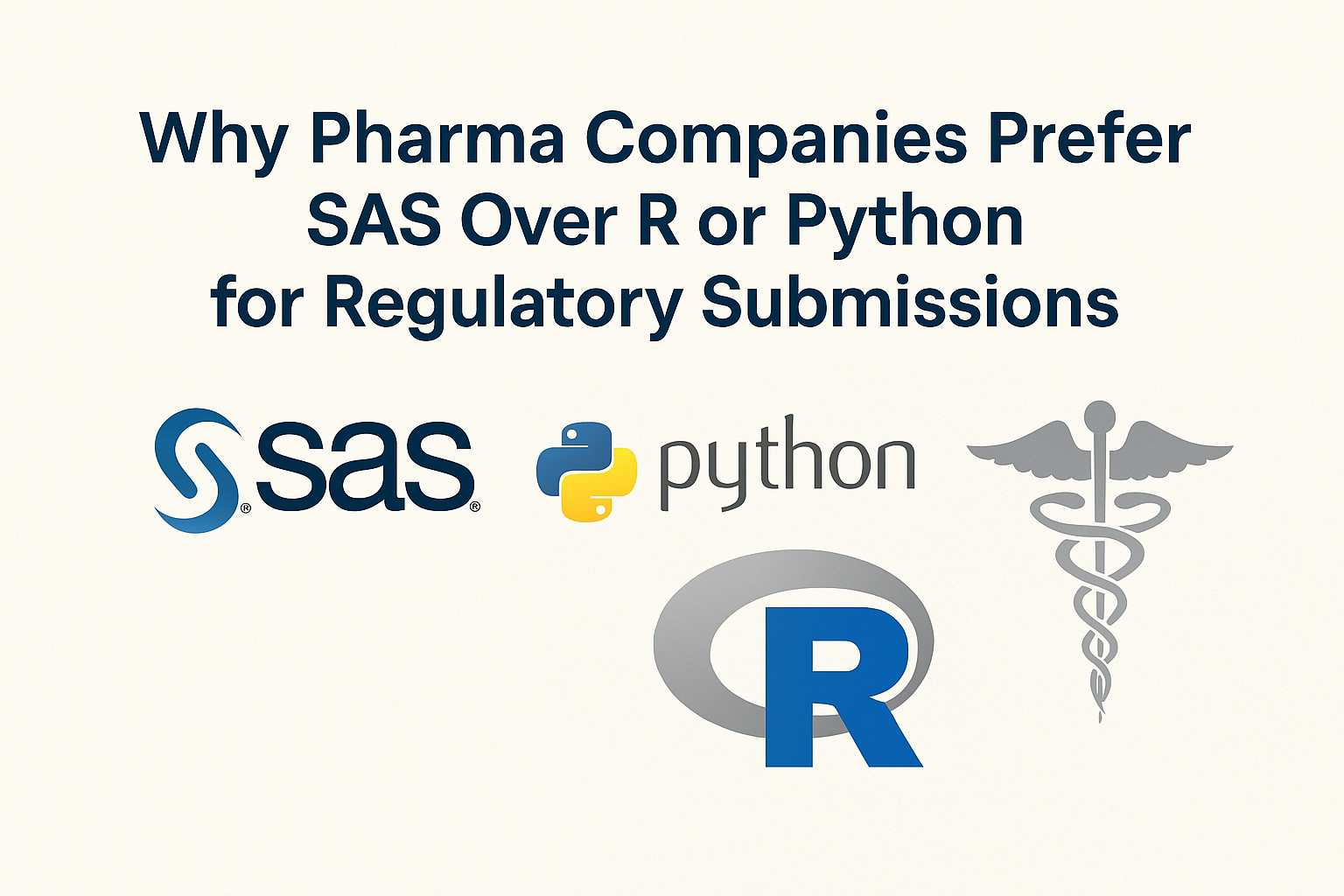
- by Handson
- March 6, 2024
Clinical SAS Project
Project: Real-Time Clinical Data Analysis for Multinational Pharmaceutical Company
Client: Multinational Pharmaceutical Company (MNC)
Problem: The MNC is conducting a global Phase III clinical trial for a new drug and requires real-time insights from clinical data across diverse geographical locations. However, their current data management system lacks the capability to process and analyze real-time data efficiently. This delay in access to insights hinders timely decision-making regarding the trial's progress and potential safety concerns.
Objective: Develop a real-time clinical data analysis system utilizing Base SAS, Proc SQL, and Macros to achieve the following:
- Streamline data ingestion: Integrate with existing clinical trial management systems (CTMS) to automatically capture real-time data from various sites around the world.
- Data validation and cleaning: Implement robust data quality checks to ensure data accuracy and consistency across diverse sources.
- Real-time data analysis: Develop automated SAS programs using Base SAS, Proc SQL, and Macros to perform critical analyses on real-time data, including:
- Patient demographics and baseline characteristics: Analyze patient profiles across different regions to identify potential population differences.
- Treatment adherence and dosing information: Monitor patient adherence to the study protocol and identify any deviations.
- Safety monitoring: Monitor adverse events (AEs) in real-time to detect potential safety concerns and enable prompt intervention.
- Efficacy analysis: Track key efficacy endpoints in real-time to assess the drug's performance and identify potential trends.
- Visualization and reporting: Generate interactive dashboards and reports to effectively communicate analysis results to stakeholders, including researchers, regulators, and management.
Deliverables:
- Functional SAS programs written in Base SAS, Proc SQL, and Macros for data ingestion, cleaning, analysis, and reporting.
- User-friendly dashboards providing real-time visualizations of key metrics and trends.
- Comprehensive documentation detailing the system's architecture, functionality, and user guide.
Success Criteria:
- The system successfully integrates with existing CTMS (Clinical Trial Management System.) and automatically ingests real-time data from all trial sites.
- Data quality checks effectively identify and address inconsistencies and errors.
- Automated analyses run seamlessly on real-time data, providing reliable and timely insights.
- Interactive dashboards effectively communicate key findings to stakeholders.
- The system adheres to all regulatory requirements for clinical data security and privacy.
Technical Considerations:
- The system should be scalable and adaptable to accommodate future growth in data volume and complexity.
- The use of Base SAS and Advanced SAS ensures compatibility with existing infrastructure and avoids licensing issues.
- Secure coding practices and robust data access controls will ensure data integrity and compliance.
This project will empower the MNC to access and analyze clinical trial data in real time, enabling them to make informed decisions regarding the trial's progress, patient safety, and overall success.
Implantation guidance:
This is a simplified representation, and the actual implementation will require extensive customization and testing to meet specific project requirements and regulatory compliance.
Here is an outline the key components and provide code snippets demonstrating the functionalities mentioned:
1. Data Ingestion (Macro):
SAS
%MACRO ingest_data(dsn);
PROC SQL;
CREATE OR REPLACE VIEW clinical_data AS
SELECT * FROM &dsn.clinical_data_table; /* Replace with actual table name */
QUIT;
%ENDMACRO;
%ingest_data(ctms_dsn); /* Replace with CTMS datasource name */
This macro uses Base SAS and Proc SQL to create a view named "clinical_data" within the SAS library. The view directly references the actual clinical data table from the CTMS datasource, enabling real-time data access.
2. Data Validation and Cleaning (Base SAS):
SAS
DATA clean_data;
SET clinical_data;
/* Data validation checks and cleaning logic here */
IF age <= 0 THEN age = .; /* Set invalid age to missing */
IF treatment = ' ' THEN treatment = 'Missing'; /* Set blank treatment to 'Missing' */
RUN;
This code snippet demonstrates basic data cleaning steps within Base SAS. You would need to customize the logic based on specific data quality checks required for your project.
3. Real-time Data Analysis (Proc SQL & Macros):
a) Patient Demographics (Proc SQL):
SAS
PROC SQL;
SELECT country, count(*) AS n_patients
FROM clean_data
GROUP BY country;
QUIT;
This query uses Proc SQL to analyze patient demographics by country, counting the number of patients from each region.
b) Treatment Adherence (Proc SQL):
SAS
%MACRO adherence_analysis;
PROC SQL;
SELECT treatment, count(*) AS n_patients, sum(case when missed_doses > 0 then 1 else 0 end) AS n_missed_doses
FROM clean_data
GROUP BY treatment;
QUIT;
%ENDMACRO;
%adherence_analysis;
This macro utilizes Proc SQL to analyze treatment adherence by calculating the number of patients on each treatment and the number of patients who missed doses.
c) Safety Monitoring (Base SAS & Macro):
SAS
DATA safety_data;
SET clean_data;
IF aeterm NE '' THEN flag = 1; /* Flag rows with adverse events (AEs) */
RUN;
%MACRO safety_report;
PROC MEANS data=safety_data noprint;
VAR flag;
OUTPUT OUTSTAT=safety_stats;
RUN;
%LET report_text = "Number of AEs reported: " || catx(',', safety_stats.N);
%PUT report_text;
%ENDMACRO;
%safety_report;
This code demonstrates identifying potential safety concerns by flagging rows with AEs and calculating the total number of AEs using Base SAS and a macro.
4. Visualization and Reporting:
While the code for generating interactive dashboards is beyond the scope of this response, you can utilize SAS Output Delivery System (ODS) or integrate with external reporting tools like Tableau to create visualizations based on the analysis results.
5. Security and Compliance:
The provided code snippets showcase functionalities, but it's crucial to implement robust security and compliance measures for real-world implementation. This includes user authentication, data access controls, and adherence to relevant data privacy regulations.






